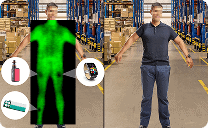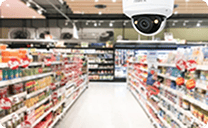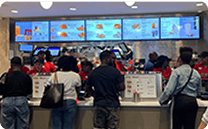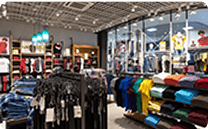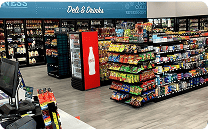In This article
Physical security is the foundation of any organization’s safety strategy and utilizes technologies, processes, and policies to minimize risks, deter unwanted activities, and safeguard critical areas. Unlike cybersecurity, which targets digital threats, physical security specifically addresses the real-world risks related to people, equipment, facilities, and inventory.
Effective security takes a layered approach. By combining access restrictions, surveillance, environmental design, and employee awareness, organizations can lower the likelihood of incidents and maintain control over sensitive areas.
Key Elements of Physical Security
Physical security systems typically include a mix of the following components:
Access Control: Card readers, keypads, biometric scanners, locked doors, and other mechanisms to limit who can enter or exit designated spaces.
Surveillance: Cameras, monitoring stations, and video management systems that provide visual oversight of high-risk areas or general activity.
Barriers and Boundaries are fences, gates, bollards, turnstiles, and security doors that restrict physical movement or vehicle access.
Alarm Systems: Intrusion detection tools notify personnel or law enforcement when unauthorized activity is detected.
Security Personnel: Guards or patrol services that provide a human presence for deterrence and response.
Environmental Design: Using lighting, landscaping, and building layout to discourage unauthorized access and promote visibility.
Visitor Management: Systems to log, badge, and track visitors or contractors during their time on site.
These elements contribute to a broader strategy for safeguarding people, property, and operations.
Business Applications of Physical Security
Businesses across sectors rely on security to manage various risks. For example:
- Retail locations use physical barriers, cameras, and panic buttons to prevent theft and manage incidents.
- Warehouses secure perimeters and inventory zones with access control, cameras, and 24/7 monitoring.
- Restaurants and QSRs monitor cash handling areas, storage rooms, and delivery entries to reduce internal and external threats.
- Office buildings use badges and visitor logs to protect sensitive departments and information.
- Healthcare facilities maintain restricted access to medication storage and patient areas.
The right mix of security solutions depends on the size of the location, the value of what’s being protected, and the types of threats most likely to occur.
Benefits of Physical Security
An effective strategy delivers multiple operational advantages:
- Prevents unauthorized access to sensitive areas or equipment.
- Reduces the risk of theft, vandalism, and workplace violence.
- Supports employee safety and peace of mind.
- Protects valuable equipment and intellectual property.
- Creates documentation for investigations, audits, or insurance claims.
- Enhances operational continuity by minimizing disruptions.
Physical security is closely tied to compliance in many industries. Businesses are required to meet regulatory or contractual obligations related to securing access to specific zones or data.
Strengthen Physical Security with DTiQ
DTiQ has solutions to help businesses build stronger security solutions by integrating video surveillance, access control, and alerts into a unified 360iQ platform. From perimeter protection to activity verification, DTiQ delivers the visibility and tools to safeguard your spaces and support effective incident response. Whether you’re managing a single location or multiple locations, DTiQ makes security more intelligent and more actionable. Contact us to learn more.
